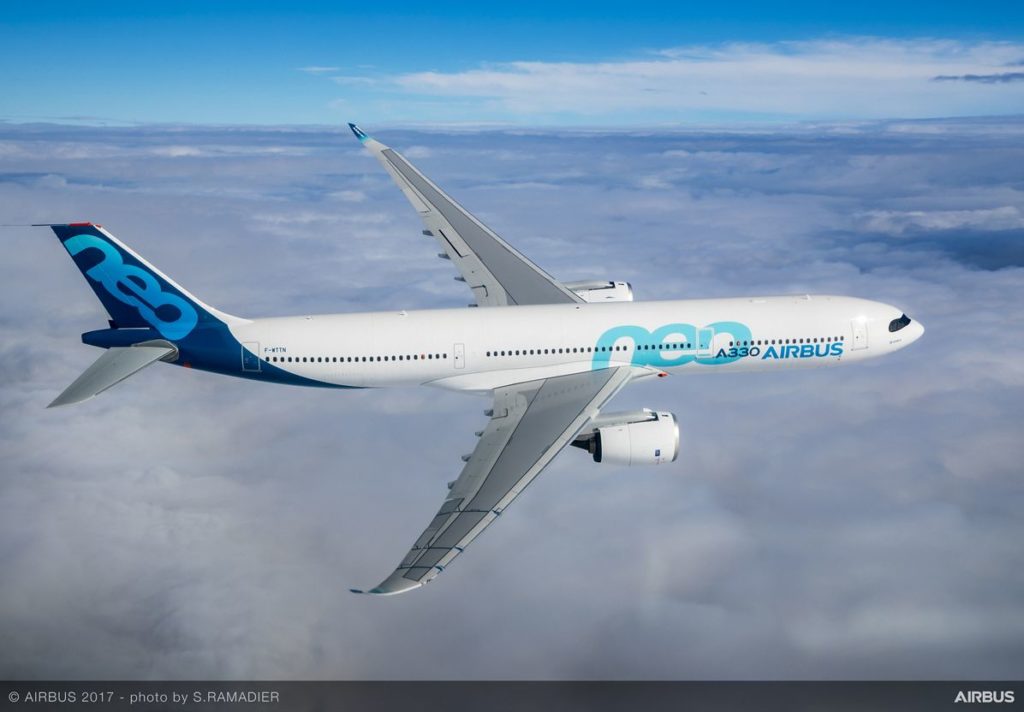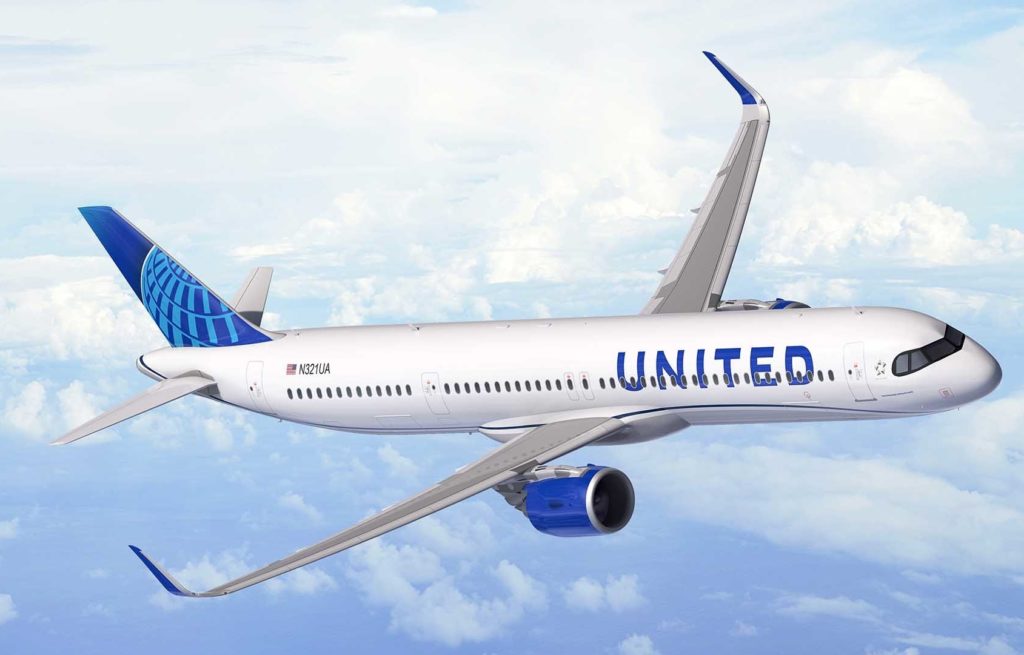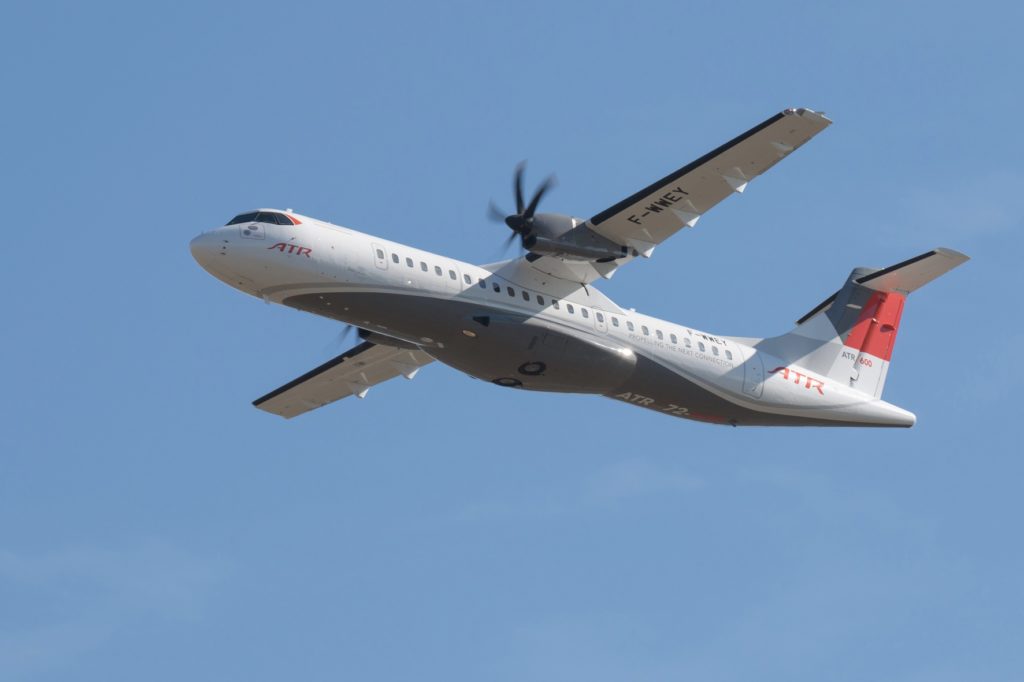Leeham News and Analysis
There's more to real news than a news release.
Can the Airbus A321XLR fly trans-Oceanic routes?
By Bjorn Fehrm
Subscription Required
Introduction
March 19, 2020, © Leeham News: Over the last weeks, we compared the Airbus A330-900 to the A350-900 when flying the long routes over the Pacific Ocean. Now we pose the question: To what extent is an A321XLR a possible alternative or complement to these long-rangers for Oceanic routes?
The A31XLR has the range to be a credible trans-Atlantic aircraft since its 700nm range hike over the A321LR. But can it be used over the Pacific Ocean as well? We check it out.
Summary:
- Direct routing US West Coast to East Asia is too long for the A321XLR.
- But there are interesting US to Asia routings where the A321XLR is the enabler for the route structure.
Coronavirus impact to Boeing still unfolding
By Judson Rollins
Subscription Required
March 16, 2020, © Leeham News: Boeing stock sold off 28% last week on news that the company would draw down the remainder of a $13.8bn loan it arranged in February to cover ongoing expenses related to the 737 MAX.
In addition to MAX-related charges, the company is also hoping to close its joint venture with Embraer and has looming debt maturities later this year. But the company’s airplane sales prospects are an increasing source of worry for investors.
The coronavirus and its impacts – which are still unfolding – put up significant obstacles to Boeing’s recovery, even as it hopes to finally see the MAX recertified within a few months. Read more
Does the new weight bump turn the A330-900 to a trans-Pacific aircraft? Part 2
By Bjorn Fehrm
Subscription Required
Introduction
March 12, 2020, © Leeham News: We continue last week’s theme and compare Airbus’ new 251t variant of the A330-900 to the A350-900 in this article.
We saw in the first article the A330-900 251t is now a credible long-range aircraft, including the long hop over the Pacific ocean. When to use the A330-900 or the A350-900? We analyze their economics and where one is to prefer to the other for long-range operations.
 Summary:
Summary:
- The Airbus A330-900 in its 251t version can serve many US to Asia routes that were reserved for the A350-900 before.
- We check if the economics support replacing the A350-900 with the A330-900 for these routes.
European airline struggles add risk to 15% of Airbus, Boeing orders
By Judson Rollins
Subscription Required
Introduction
Earlier this week, LNA examined the potential for a shakeout among European carriers as the coronavirus outbreak spreads to the continent.
Five European countries now rank among the ten hardest hit – travel demand is plummeting nearly as rapidly as after the September 11 attacks in the US.
On Thursday, UK-based Flybe went into bankruptcy after long-time financial struggles. The airline had 54 De Havilland Canada Dash-8-400s and nine Embraer E175-E1s in its fleet, more than half of which were leased from Nordic Aviation Capital and HEH Aviation Management.
LNA reviewed aircraft ownership data to understand top manufacturer and lessor exposure to European carriers, particularly those with known profitability issues and high debt loads.
Summary
- Airbus’s exposure to Europe is 16% on single-aisles and 19% on twin-aisles;
- Boeing has just under 15% of its single- and twin-aisle orders from Europe;
- Embraer’s E2 jet program has 27% exposure to the region;
- ATR, De Havilland Canada, COMAC face little to no threat from European airline woes;
- Norwegian, TAP, SAS, TUI are likely the most imminent threats to manufacturers and lessors.
Does the new weight bump turn the A330-900 to a trans-Pacific aircraft?
By Bjorn Fehrm
Subscription Required
Introduction
March 5, 2020, © Leeham News: Airbus gave an update on their new 251t variant of the A330-900 this week. With a 251t Maximum Take Off Weight (MTOW), the former mid-ranger is mutating to an able long-hauler.
The true long-haul aircraft in the Airbus lineup is the A350, the go-to aircraft from Airbus for Pacific-Ocean crossings. But with a nominal 7,200nm range, the A330-900 is no longer the trans-Atlantic aircraft it was. It will be an alternative to the A350 for many trans-Pacific routes.
Summary:
- The A330 started as a mid-range aircraft with less than 4,000nm range. At the time, the A340-300 was positioned as the long-ranger.
- With the A340 out of the way and to compete with Boeing’s 787, the A330 grew its range 85%. Is it now an alternative to the A350?
Asian airline troubles could affect up to 20% of Airbus, Boeing backlogs
By Judson Rollins
Subscription Required
In last week’s analysis, LNA examined which airlines in greater China and the rest of Asia may be in imminent risk of financial distress due to the growing coronavirus outbreak. We found that airlines from Malaysia to Japan have significant exposure to the Chinese market. Several have shaky balance sheets and were already losing money prior to the outbreak, most notably AirAsia, AirAsiaX, Thai Airways, Nok Air, Malaysia Airlines, and Asiana.
The coronavirus outbreak has now spread to Europe and the Middle East, but we are continuing our focus on Asia as it’s been most greatly affected so far. Additional analysis focusing on Europe will follow, with particular attention to the potential for further airline consolidation on the continent.
LNA reviewed ownership and operating data on aircraft to understand top manufacturer and lessor exposure to greater China, which includes Hong Kong and Macau, and the rest of East Asia.
Summary
- Airbus has greater exposure to China and the rest of East Asia, especially in widebodies;
- Boeing’s 787, 777X difficulties will be exacerbated by Asian airline troubles;
- COMAC’s sales book is almost exclusively in China, but government support is likely;
- ATR has material exposure to Southeast Asia; other regional aircraft OEMs are largely unaffected.
Why was the 737-8 losing market to the A320neo before the MAX crisis?
By Bjorn Fehrm
Subscription Required
Introduction
February 27, 2020, © Leeham News: While we wait on the Boeing 737-8 to get back in the air, we take a look at how this best seller in the 737 series compares with its direct rival, the Airbus A320neo.
The 737-800 and its follow on, the 737-8, have been the most popular single-aisles in Boeing’s lineup for decades. The 737-800 sold more units than the A320. But when both got re-engined, this changed. The A320neo is now outselling the 737-8.
We look into why.
Summary:
- The trend where the A320neo is outselling the 737-8 started well before the MAX crisis. Is the root cause better airframe performance?
- We find the cause to be another. The difference is not about a change in relative airframe performance between the two.
The Impact of Asian airline difficulties on OEMs
Subscription Required
By Vincent Valery
Introduction
Feb. 24, 2020, © Leeham News: Passenger traffic in the Asia-Pacific region has grown dramatically since the turn of the century. Except for temporary dips caused by SARS in 2003 and the global financial crisis in 2008-09, passenger growth has stayed comfortably above 5% each year.
China emerged as the second-largest commercial aviation market behind the US. Domestic traffic in mainland China grew fivefold, and international traffic doubled since 2003. Numerous low-cost carriers become powerhouses during that period.
Along with this growth came major aircraft orders. Five out of the 10 largest A320neo family orders are from airlines in the Asia-Pacific region.
However, airline profitability in the region recently lagged that of those in the US and Europe. Even before the COVID-19 (coronavirus) outbreak, numerous carriers had financial difficulties. The outbreak will accelerate the reckoning for some airlines.
According to an IATA report, the COVID-19 outbreak could translate into a $29.3bn revenue loss for airlines in 2019. Instead of a predicted 4.8% YoY passenger traffic growth for the Asia-Pacific region in 2020, traffic could contract by 8.2%.
In the first of a two-part analysis, LNA assesses the vulnerability of various airlines and the resulting potential impact on OEMs.
Summary
- Numerous airlines have significant capacity exposure to China;
- Several Asian airlines already had fragile balance sheets;
- Chinese airlines are under particularly acute cash pressure;
- Airbus and Boeing have material production exposure to affected airlines.
ATR: We’re confident in the future of turboprops
Subscription Required
By Judson Rollins
Introduction
Executives from turboprop manufacturer ATR expressed optimism about their product range and the future of turboprops in general at last week’s Singapore Airshow.
According to industry databases, ATR has 52% of the market for 30+ seat turboprops in service and 63% of 70+ seaters. It competes primarily against De Havilland Canada’s DHC-8 family. The ATR-72 accounts for nearly two-thirds of ATR production. Both models are produced on a single assembly line.
However, ATR dominates the backlogs by a wider margin.
Summary
- ATR touts advantages of the ATR-42 and -72 family;
- Special performance capabilities of the ATR-42 are key for developing markets;
- Adapting aircraft capabilities to stay ahead of revitalized DHC-8 competitor;
- Not looking to compete with regional jets in the 70+ seat space.






